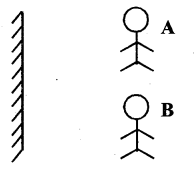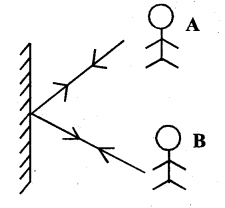Students can Download Chapter 11 Light, Shadows and Reflections Questions and Answers, Notes Pdf, KSEEB Solutions for Class 6 Science, Karnataka State Board Solutions help you to revise complete Syllabus and score more marks in your examinations.
Karnataka State Syllabus Class 6 Science Chapter 11 Light, Shadows and Reflections
Class 6 Science Light, Shadows and Reflections NCERT Textbook Questions and Answers
Question 1.
Rearrange the boxes given below to make a sentence that helps us understand opaque objects.
Answer:

Question 2.
Classify the objects or materials given below as opaque, transparent or translucent and luminous or non – luminous :
Answer:
Air, water, a piece of rock, a sheet of aluminium, a mirror, a wooden board, a sheet of polythene, a CD, smoke, a sheet of plane glass, fog, apiece of red hot iron, an umbrella, a lighted fluorescent tube, a wall, a sheet of carbon paper, the flame of a gas burner, a sheet of cardboard, a lighted torch, a sheet of cellophane, a wire mesh, kerosene stove, sun, firefly, moon.
Opaque objects : a piece of rock, a sheet of aluminium, a mirror, wooden board, a CD, ah umbrella, a wall, a sheet of carbon paper, a sheet of cardboard.
Transparent objects : Air, water, a sheet of polythene, a sheet of plane glass, a sheet of cellophane, a wire mesh.
Luminous objects : a piece of red hot iron, a lighted fluorescent bulb, the flame of a gas burner, a lighted torch, kerosene torch, sun, firefly.
Non luminous objects : Air, water, a piece of rock, a sheet of aluminium, a mirror, a wooden board, a sheet of polythene, a CD, smoke, a sheet of plane glass, fog, an umbrella, a wall, a sheet of carbon paper, a sheet of cardboard, a sheet of cellophane, a wire mesh, moon.
Question 3.
Can you think of creating a shape that would give a circular shadow if held in one way and a rectangular shadow if held in another way ?
Answer:
A cylindrical shape can give a circular shadow when light is incident from its top or bottom. It will give a rectangular shadow when light is incidental from its side.
Question 4.
In a completely dark room. If you hold up a mirror in front of you, will you see a reflection of yourself in the mirror.
Answer:
No, we will not be able to see Our reflection in the mirror because there is no source of light in the room.
Class 6 Science Light, Shadows and Reflections Additional Important Questions and Answers
I. Choose the correct answer
Question 1.
Objects that emit light on their own are called ___
a) Light objects
b) Luminous objects
c) Non luminous objects
d) Opaque bodies
Answer:
b) Luminous objects
Question 2.
Which one of the following is not a luminous objects ?
a) Lit candle
b) Sun
c) Star
d) Moon
Answer:
d) Moon
Question 3.
If we are able to see anything clearly through an object, then such an object is said to be a ___ object
a) Transparent
b) Translucent
c) Opaque
d) None of these
Answer:
a) Transparent
Question 4.
A ___ eclipse occurs when earth conies between sun and moon in a straight line.
a) Solar
b) Lunar
c) Shadow
d) None of these
Answer:
b) Lunar
Question 5.
The shape of a shadow depends on which of the following.
a) Shape of the opaque object
b) Colour of screen
c) Colour of the object
d) All of these
Answer:
a) Shape of the opaque object
Question 6.
Shadows are
a) Always smaller than the opaque object
b) Always bigger than the opaque objects.
c) Remains the same size as opaque object.
d) Can be smaller or bigger than the opaque object
Answer:
d) Can be smaller or bigger than the opaque object
Question 7.
Which one of the following is a living luminous object ?
a) Sun
b) Moon
c) Fire fly
d) burning candle
Answer:
c) Fire fly
Question 8.
A is an instrument used for observing objects from a hidden position.
a) Telescope
b) Microscope
c) Periscope
d) Kaleidoscope
Answer:
c) Periscope
Question 9.
The light from the sun reaches the earth in
a) 8.33 min
b) 8.33 sec
c) 18.33 min
d) 88.33 sec
Answer:
a) 8.33 min
Question 10.
The image formed in pinhole camera is
a) Inverted
b) Erect
c) Both a and b
d) None of these
Answer:
c) Both a and b
II. Answer the following questions:
Question 1.
State difference between a luminous and a non luminous body.
Answer:
The bodies which emit light are called luminous bodies. Ex : Sun, stars, burning candle etc.
The bodies which do not emit light are called non luminous bodies. Ex: Moon, earth, black board.
Question 2.
Why is the moon not considered as a luminous body ?
Answer:
Moon is non luminous body because it shines by reflecting the sunlight falling on it.
Question 3.
How does a light travel ?
Answer:
Light ray travels in a straight line.
Question 4.
What is shadow ?
Answer:
Shadow is the dark space behind an opaque object where light does not reach.
Question 5.
What is an incandescent body ? Give example.
Answer:
The bodies which emit light when heated to a very high temperature are called incandescent bodies. Ex : Electric bulb.
Question 6.
What are the essential conditions for the formation of shadow ?
Answer:
- There should be an opaque material
- There should be a source of light and screen.
- The object must be placed in the path of light. Then shadow is formed on the screen.
Question 7.
Define reflection of light ?
Answer:
When light rays after striking the smooth and shiny surface return to same medium, this phenomenon is called reflection of light.
Question 8.
What do we need in order to see a shadow ?
Answer:
We need
- A source of light
- A screen
- An opaque object
Question 9.
What do you mean by scattering of light ?
Answer:
When a beam of light falls on a rough surface it is turned back in different directions. It is called scattering of light.
Question 10.
A and B are facing the mirror and standing in such a way that A can see B and B can see A. Explain this phenomenon.
Answer:

The light rays from A falls on the mirror and gets reflected and reaches B, the light from B falls on the mirror and reflects to reach A. The path of light is just as shown.

Question 11.
What is reflection of light ? Explain reflection of light with the help of an activity.
Answer:
When light rays fall on a highly polished smooth surface and return to the same medium it is called reflection of light. Activity to show reflection of light. This activity should be done at night or in a dark room. Ask your friend to hold a mirror in his hand at one comer of the room. Stand at another comer with a torch in your hand cover the glass of torch with your fingers and switch it on. There should be small gap between your fingers. Direct the beam of torch light on to the mirror that your friend is holding adjust the direction of torch so that a patch of light fells on your friend standing in the room. This activity shows the reflection of light also that light travels in straight line.